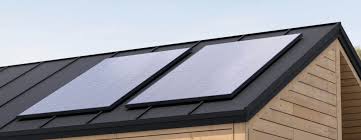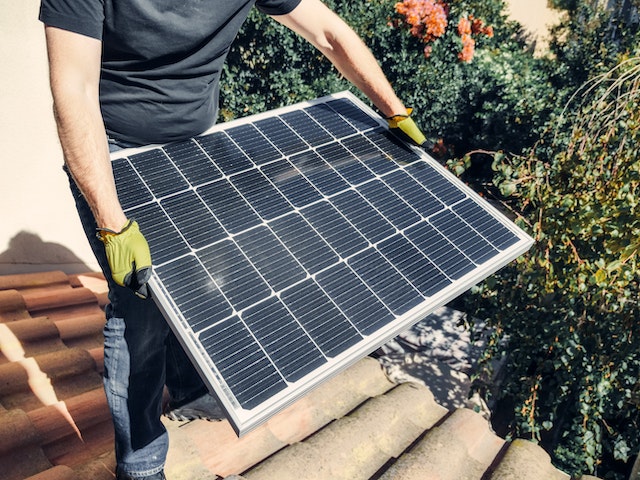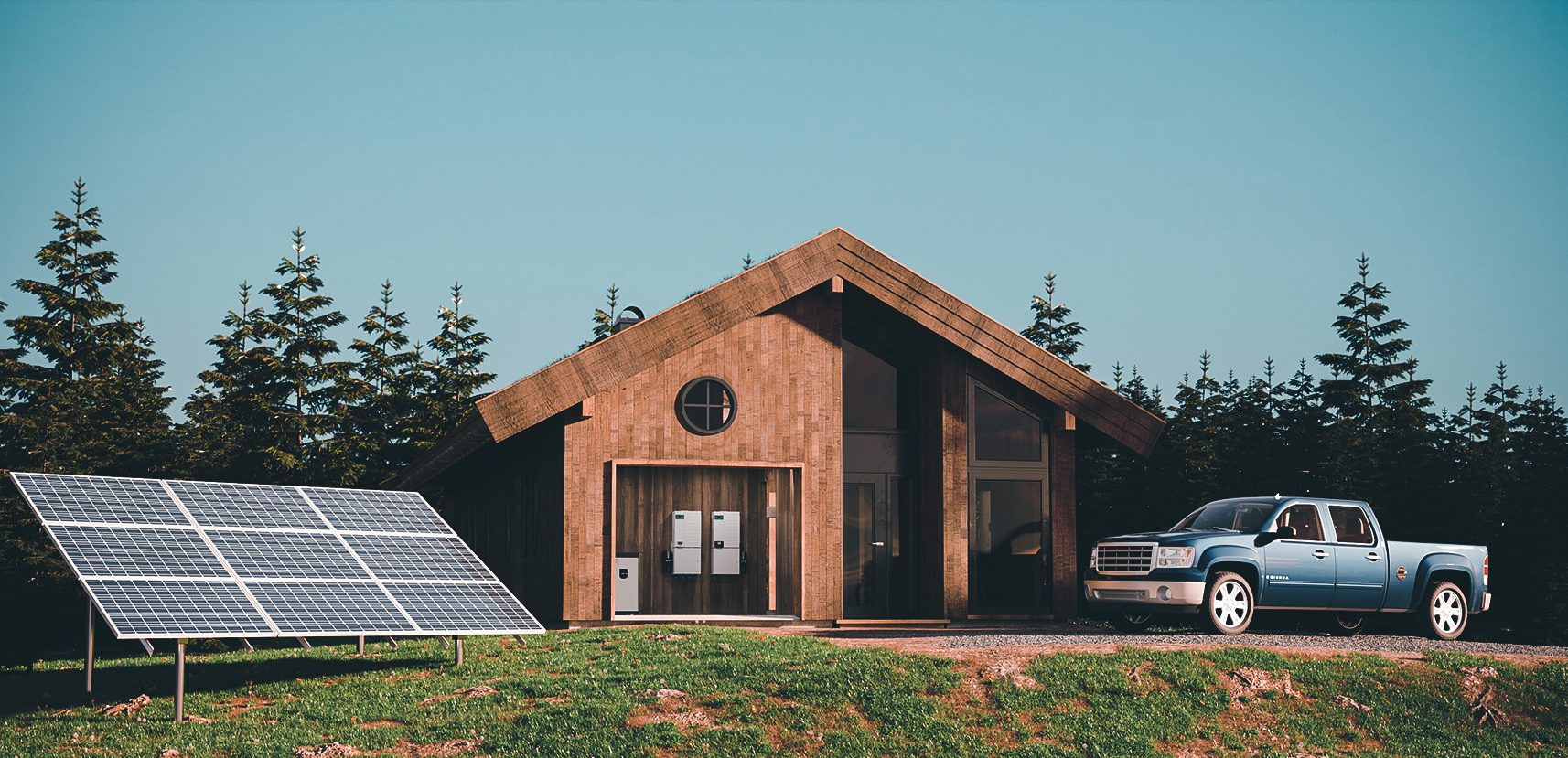Photovoltaic Solar Energy
Photovoltaic (PV) solar power: This is probably the most common and best-known of modern renewable energy technologies, as it produces electricity directly from sunlight; this is known as "solar PV". The world-wide market for PV has grown exponentially and that more than 710 GW have been installed by the end of 2022. PV panels are made of many cells that absorb photons thus releasing electrons producing an electric current. The advantage of this direct conversion process is that it uses waste heat to generate electricity and does not emit greenhouse gases during operation.
Market Insights:
The photovoltaic market is led by countries like China, the United States, and Germany. This also indicates that China, with a huge PV capacity of about 87.4 gigawatts added in just this year alone is heavily investing into renewable energy opportunities (in the sense that nearly half was concentrated under them). This is attributed to the significant decline in costs for PV systems over time, which has rendered solar energy a lot more affordable consequently. The average residential PV system costs $2.94 per watt in the United States as of 2023, over a tenfold reduction from more than $8 per watt at its peak price level back in 2010 This reduction in cost is due to economies of scale, advancements in manufacturing and number supplier becoming available.
Technological Advances:
Advances in PV technology of late have also seen the introduction of bifacial solar panels that can receive light from both sides and operate at an additional 30% efficiency. In comparison to albedo, bifacial panels work especially well in snowy regions due the increased amount of light bounced from snow as white roofs, making sunlight reflect off and reaches the rear side of a panel. Another breakthrough are perovskite solar cells with efficiencies above 200% that have the potential to outperform traditional silicon-based cells in terms of efficiency and price. This would make the cells almost entirely from low-price materials and compatible with simpler manufacturing processes, which again could reduce production costs. Scientists are already in the process of incorporating these new materials to get solar panels with more improved efficiency and a longer shelf life.
Installation Process:
- Site Assessment - The solar provider assesses the site to determine system size and orientation based on ideal sunlight exposure. This is taking into account the shading study, condition of roof and its structural integrity.
- Why: Engineers then design the system layout and get it permitted (which depends on factors like panel orientation, tilt angle, inverter placement) The building inspectors involved must be impressed with solid accuracy of hearing the structure size as all necessary permits are obtained from local permitting authorities and this complies with applicable code regulations.
- Mounting: PV panels are installed on rooftops or overhead with assistance of racking systems. Wiring, inverter and disconnects are installed as well and connected to the main power supply. For residential systems, installation is usually done within 1-3 days depending on the system size and complexity.
- Inspection and Commissioning: Once installed, the system is then inspected by local authorities as well as utility companies to insure that it meets proper safety codes/standards. With permission to operate, the system is switched on and connected to its consumer, enabling either net metering or feed-in tariffs.
Economic Impact:
The Solar Manufacturing Industry Creates Jobs Around the World PV industry jobs have been created throughout the world. By 2023, the solar workforce would swell to more than a quarter of a million workers in total. Jobs...the jobs come in many types for manufacturing, installation and maintenance roles across the sectoristic (is that a word?) branches of economy. The development of solar energy has resulted in the growth of another land use sector which is expected to climb over $300 billion globally annually, stemming from investments into PV infrastructure. Governments and private investors alike have come to respect the long-term advantages of renewable energy, and thus are boosting financial support for PV research, development (R&D), manufacturing & commercializing.
Solar Thermal Energy
Sunlight is used to heat a working fluid, which heats water or air and can also power an electric generator (The energy may be extracted even when the sun is not shining), such as in solar towers. This type of energy is incredibly efficient in protecting the environment and it can seriously decrease our reliance on fossil fuels to heat large-scale projects such as an entire city or a huge company center along with small scale heating systems.
Market Insights:
Nations with high levels of solar insolation, such as Spain and the U.S., have masses of installed natural gas-operated HW heaters in a location. At the end of 2023, the total installed capacity was approximately 480 GWth. It is in Europe that solar thermal technologies for water heating are most widespread with several countries having at least a single example of such an installation.
Technological Advances:
Recent technological advancements in solar thermal energy involve the use of improved heat storage systems such as molten salts, which are capable of storing large quantities of heat with a higher efficiency than oil or water. Molten salt can store heat for at least a few hours, making it possible to continue producing energy after the sun goes down. A further development is the use of solar towers or dishes, which collect and focus sunlight to achieve high temperatures for electricity generation (and are found in many other systems improving efficiency).
Installation Process:
- Site Evaluation: Solar professionals evaluate your property to assess not only how much energy you can potentially produce, but what type of system would be best for the size and scope of the project. In the case of examining your specific situation, consider looking at what type is best for you according to space, weather conditions and shade.
- System Design - Engineers design the arrangements of components in a system; such as, which collectors (flat-plate, evacuated tube, or concentrating), storage tanks and piping. This means that the design must maximize solar exposure and yet allow for efficient heat transfer.
- Compliance with Building codes and safety regulations: You must have proper permits to begin any form of work on your home
- Setup: Solar collectors are installed on the roof along with ground frameworks in addition to piping that connects into storage tank and heat exchangers. It may take several days to weeks for installation, depending on the size and complexity of the system.
- Test & commission- The system is extensively tested to review its operation whether proper or not then checks are made for leaks, temperature settings and heat transfer efficiency.
Economic Impact:
Its unique and novel riff on the Chinese solar trade equation is to make it about creating jobs, promoting U.S. economic growth through manufacturing incentives for companies such as Solyndra Inc.and First Solar Inc., some of which manufacture products in China (but do so at a cost advantage due to better pricing policies.) The solar thermal sector employed over 300,000 people globally in manufacturing, installation maintenance and R&D functions as of the end of Q4.2022 Solar thermalMore than 80 GW of electricity are produced with solar thermal but the investment in this part is considerable too, about $19 billion annually worldwide. Solar thermal energy pays off for countries, decreasing power prices with economic savings; boost of security will also split from the network as both benefits not to mention environmental value.
Concentrated Solar Energy
Concentrated Solar Energy (CSE) which is when mirrors, lenses or combinations of both are used to concentrate a big area of sunlight onto one small spot. It then uses the concentrated light as heat, which can be camberted to electricity via any conventional thermal power cycle This method is very effective, most especially for Bio Fuel which used in large scale power plants.
Market Insights:
The worldwide market for concentrated solar energy has grown substantially. Global installed concentrated solar power (CSP) capacity as of 2023 will be nearly 6.5 GW, according to the report--with Spain and the U.S. dominating that landscape so far-with over half allotted to towers in which large mirrors concentrate light on a receiver built atop a very tall central tower with molten salt providing storage for thermal energy harvested during daylight hours from captured photons reflecting off heliostats/flipper reflectors before their converted back into heat after sundown... More than 2.3 gigawatts (GW) of concentrating solar power were installed in Spain, using mostly parabolic trough technology.
Technological Advances:
Improvements in technologyEqual advancements are being realized with concentrated solar energy, especially when it comes to achievement of more efficient heliostats and thermal storage. Heliostats are used as mirrors to reflect light from the sun, back on a central receiver. These developments have boosted the overall efficiency of CSP plants, improved heliostat design for increased accuracy and longevity. More recently, molten salt storage systems have come into vogue and CSP plants can store heat in a liquid form to enable power generation when the sun is not shining. Such systems can even store thermal energy above 500 ° C and deliver a storage capacity of up to 15 hours.
Installation Process:
- Site Assessment Solar insolation levels Land availability Environmental impact 2. It is preferable that the sites are located in deserts or areas where direct normal irradiance (DNI) insolration valueis high.
- Engineering and Design: Engineers determine how the mirrors or lenses will be laid out, where typical part of a central receiver this solves so does can function towhere needs it too. This includes in-depth simulations conducted to tune the configuration for most efficient operation.
- Permits and approvals- It is crucial to get the right permits, environmental clearances. All of this requires regulatory approvals and community consultations.
- An identified heliostat field, a central receiver built-in with constructed phase to establish the entire storage system. CSP plants are typically large and can take years to build with major public investment.
- Commissioning and Testing: The commissioning process includes the system being tested thoroughly to make sure all components are working properly. This involves aligning heliostats, running thermal storage and interfacing to the power generation system.
Economic Impact:
As a major industry in many sun-rich countries, the CSP industry brings large economic benefits. That industry already supports thousands of jobs in the United States, from construction and engineering to operations and maintenance. Costs for CSP projects are large with the global market over $9 billion a year. Such investments do much to foster economic as well as energy stability and sustainability.
Passive Solar Energy
Passive solar energy is making use of what the building itself can do to collect, store and distribute heat so as it lighter. It is cemented in and has no mechanical units, just the materials used to construct it initial. This process can lead to substantial savings in energy use within homes and buildings.
Market Insights:
Residential and commercial buildings in regions with large seasonal temperature variations, south-facing homes or other small developments are among the users of passive solar design. Passive solar design - often including one or more of the same features found in European designers' so-called "active" houses - is already built into new construction across America, especially in California and other states with higher-than-average efficiency standards. The energy-efficient building market, including passive solar design, is to grow to $118 billion by 2025.
Technological Advances:
Passive solar energy has made a lot of advancements lately in terms of materials and design software. Efficient glazing and low-e windows can be designed to maximize solar gain during the heating season, while reducing heat loss. With Building Information Modeling (BIM) software, architects can take passive solar strategies into account during the design of a building and then run simulations to determine how much thermal mass is needed in certain areas on each floor.
Installation Process:
- Site analysis: Examine which way the building faces, local climate conditions, and whether shading will be a problem from nearby buildings or vegetation. The aim is to maximize the southern exposure in climates of north hemisphere.
- Development of passive solar building designs (Design Phase). For example, building with south-facing windows to let in winter sunlight refreshing an existing home by using thermal mass (such as concrete or stone) and insulation when possible. In summer's, to avoid overheating overhangs or shading devices are also designed as per the need.
- Suitable materials: Select flooring and walling that is slow to heat up, thus absorbing solar energy during hot weather then radiating at night become cool. Efficiency: it is recommended to have windows with high solar heat gain coefficients (SHGC)
- Construction: Construct per the passive solar design ensuring proper window layouts, location of thermal mass and insulation. They cannot have little gaps through which energy is lost and that allow air to move in unwanted directions.
- Post Construction Thermal Performance Monitoring: Monitor the thermal performance of a building to ensure that it meets design expectation. Modifications can be easily done to optimize comfort and efficiency.
Economic Impact:
This design strategy helps to save a large amount of energy for heating and cooling called Passive solar energy. A classic example of this is a building that has been designed according to passive solar principles, which can halve the cost of heating. The up-front costs of passive solar design are often recovered over time thanks to lower utility bills and increased resale value. In addition, passive solar design helps develop the green building materials and technologies market, which is becoming a significant driving force behind construction worldwide.
Building-Integrated Photovoltaics
BIPV: Building-Integrated Photovoltaics (i. e., the integration of photovoltaic panels within to replace the building envelope such as glazing) acting simultaneously like a material for constructing and a power generator This dual role makes BIPV an appealing choice for contemporary architecture; new sustainable homes and buildings.
Market Insights:
The global BIPV market is growing fast. Topping out at an estimated $15 billion back in 2023, a market analysis firm forecasts the BIPV markey to climb as high as double that by the time its offers up to global grid parity with conventional solar opening architectures. Stringent building codes and sustainability goals have made Europe and North America the leading regions in BIPV adoption.
Technological Advances:
The technology for BIPV itself has evolved where solar cells are becoming more efficient and attractive. Recent additions include semi-transparent PV glass and colored PV modules that are able to match the rest of any building style. Advances in thin-film technology, furthermore, have resulted in flexible and lightweight BIPV products... that can be applied to a number of different surfaces.
Installation Process:
- How it works Design and Planning: Architects work together with engineers to incorporate BIPV into the building design. This will involve selecting which type of BIPV product best suits the building; deciding on where concerning orientation and location for optimum solar access, as well as ensuring whether such a new cladding system is structurally compatible.
- Licenses and Permissions: It is imperative to obtain the necessary licenses and permissions. This usually requires meeting local building codes and energy efficiency laws.
- Raw Material Procurement: The procurement of BIPV materials is done from the specialized companies which are involved in manufacturing solar shingles, PV glass or facade panels. These materials must be cosmetically appealing as well functional.
- A: The installation process also depends on the type of BIPV product. Solar shingles are applied like traditional roofing materials, while PV glass can be incorporated into windows or curtain walls (left). The DC power generated is converted to AC using an inverter system with electrical connections.
- Commission and test: The Commissioning & Testing team tests the year performance of the BIPV system for generating power as rated with all electric connections secured. This would include checking things like performance testing with different lights and looking out for issues such as shading, or wiring faults.
Economic Impact:
With BIPV, energy expenses generated will be cut down. For instance, you can now install the Tesla Solar Roof which is using BIPV technology to reduce your entire electricity bill without having any additional-cost over its lifecycle. BIPV systems have a higher upfront cost than a conventional PV product, the use of BIPV functions as both roofing material and energy generation medium that will lead to lower total costs over time. It also creates jobs in manufacturing, installation and maintenance sectors which ultimately fuels the growth of economy.



